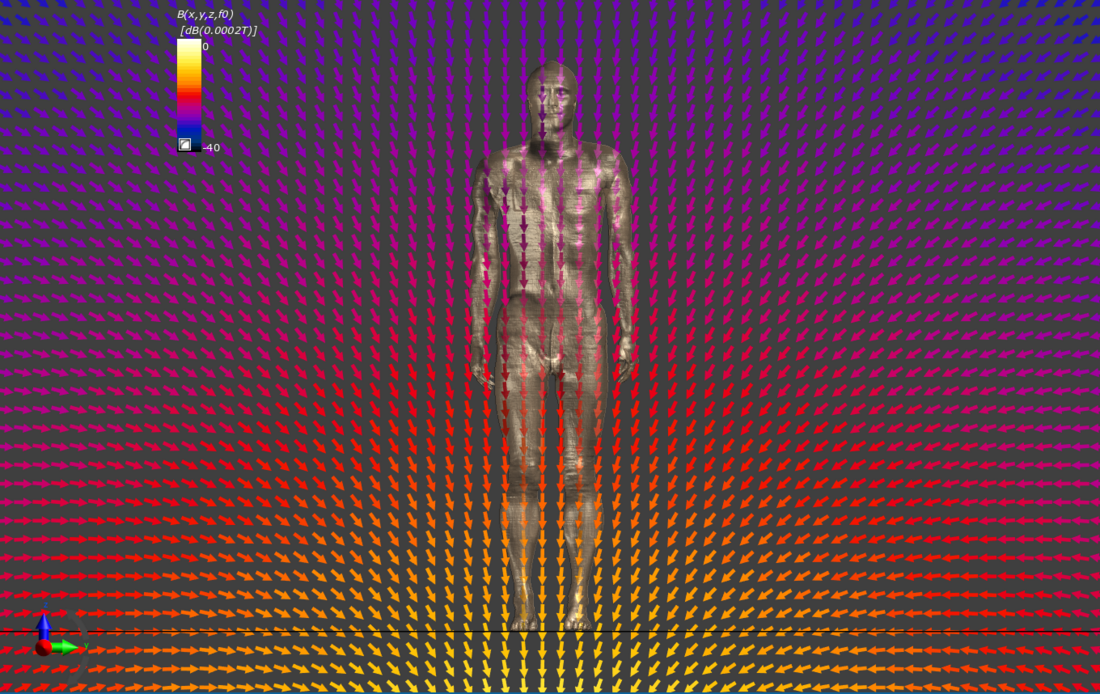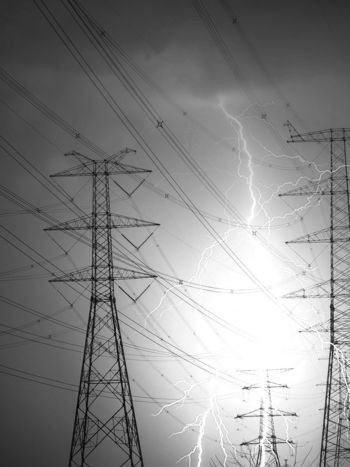Extrapolation of measured values of power-frequency magnetic fields in the vicinity of power links
In the past two decades some national regulations have required measurements of power-frequency magnetic field, either to check compliance with a “measurable exposure limit” or to inform the public on their “real” or “expected maximum” magnetic field exposure. When there is a practical impossibility of making the measurements in the nationally established “reference loading condition”, engineers are confronted with the need to extrapolate the measured values, obtained in the measurement programme, to the ones that would be produced by the applicable reference limiting condition. This Technical Brochure gives an overview of the main characteristics of the magnetic field produced by power links and of the national regulations concerning both short-term and long-term exposure to magnetic fields; and it aims at providing to practicing engineers a general framework where they can identify their case, and also, at providing information on the most important effects that may affect it and recommendations on the requirements of the necessary measurement procedures, in order to allow an effective extrapolation of the measured values.
Members
Convenor
(BR)
P.E. MUNHOZ-ROJAS
A. GUARNERI (IT), B. LI (AU), B. BOCHENSKI (CA), C. MUNTEANU (RO), C. GEUZAINE (BE), C.S. SEGURA-SALAS (BR), D. LIEBHABER (US), D. SWATEK (CA), E. HARRINGTON (IE), G. MELIK (AU), J. ZHANG (CN), Q. LI (CN), R. HUBBARD (ZA), T. KADOYA (JP), Y. MIZUNO (JP)
Corresponding Members: K. YAMAMOTO (JP), T. FUNABASHI (JP), L.A. M.C. DOMINGUES (BR)
Introduction
In the past two decades some national regulations have required measurements of power-frequency magnetic field, either to check compliance with a “measurable exposure limit” or to inform the public on their “real” or “expected maximum” magnetic field exposure.
The magnetic field produced by a power network is mainly dependent on the loading condition of the system and, due to the load variations, differently from the electric field produced by them, it presents two main and clearly distinguishable time-scales: the fast periodic time variations and the slow time variations. Therefore, for the magnetic field, it is necessary to make a distinction between short-time exposure and long-time exposure.
The nationally adopted “measurable magnetic field exposure limits” for short-term and long-term exposure and their definitions, and also the definition of the “reference loading conditions” under which those limits are applicable, are different for the different countries.
When there exist a practical impossibility of making the measurements in the nationally established “reference loading condition”, engineers are confronted with the need to extrapolate the measured values, obtained in the measurement programme, to the ones that would be produced by the applicable reference limiting condition.
Both on the measuring side and on the extrapolation side of this problem there are parts that are well established internationally, in the sense that there exist an international consensus, and parts which have different interpretations or significance in the different jurisdictions.
On the measuring side of the problem, the well established part is the procedure for obtaining the “measured values of the magnetic field at a point” and, on the extrapolation part of the problem, the well established part is the methodology for the calculation of the power-frequency magnetic field that is utilized to do the extrapolation to the applicable “reference loading condition”, which is based on the Biot-Savart’s law.
On the other hand, the definition of the “measurable magnetic field exposure limit” and the applicable “reference loading condition” show differences in different countries. Therefore, due to the different goals of the needed measurement programme, their requirements are also different.
Furthermore, there is a need of a general framework that provides to practicing engineers, which have to confront this problem, guidance to identify their case, information on the most important parameters that may affect it and recommendations on the requirements of the measurement programme, in order to allow effective extrapolation of the measured values.
Recognizing that the topic of electromagnetic fields (EMFs) is far removed from the daily technical instruments utilized by practicing engineers, since 1980, CIGRE have issued technical brochures (TBs) to introduce the topic to practicing engineers:
- CIGRE TB 021 (1980) provided an elementary introduction to calculation methods for the electric and magnetic fields;
- CIGRE TB 074 (1993) provided an elementary description of the concepts of magnetic and electric fields;
- CIGRE TB 320 (2007) dealt with the problem of identifying the more adequate metrics to represent “magnetic field exposure”. It emphasized the importance of making the distinction between the two time-scales: periodic time variations and slow time variations, and showed that the more adequate metrics to represent short-term and long-term exposure to the magnetic field were different;
- CIGRE TB 373 (2009) made a review and presented a comprehensive set of techniques to mitigate the power-frequency magnetic fields originated from electric power systems; and
- CIGRE TB 375 (2009) offered guidance on the best practices in performing measurements of low-frequency electric and magnetic fields.
Scope of work
This TB deals with the extrapolation of measured values of the magnetic field to other loading conditions that better characterize the magnetic field for exposure limiting purposes.
This TB is intended for practicing engineers interested on the topic (whether in technical or management positions), regulatory authorities or standardisation bodies. It aims at providing a general framework where they can identify their case, and also, at providing information on the most important effects that may affect it and recommendations on the requirements of the necessary measurements, in order to allow an effective extrapolation of the measured values.
Apparently, the main obstacle for a practicing engineer to properly characterize the case that he/she is confronting, or trying to deal with, by requirement of his/her national regulations, seems to be the difficulty in acknowledging the difference, frequently not well understood, between the concepts of “magnetic field” (which is a time-varying vector field (see figure 1)), of “value of the magnetic field at a point” (which is a time-varying vector), of “resultant magnetic field” (which is a scalar field that varies on a slow time-scale (see figure 2)), of “measured value of the magnetic field at a point” or “resultant magnetic field value” (which is a number that varies on a slow time-scale) and of “magnetic field exposure metric” (which is a single number that intends to approximately represent a time-varying vector field). Therefore, this TB that emphasizes the difference between the above mentioned concepts is, in this way, a step forward in the information chain represented by the CIGRE brochures on the topic of electromagnetic fields produced by power networks.

Figure 1 – Magnetic field, at an instant “t”, produced by an underground cable with balanced loading
(courtesy of LACTEC)
Content
In this TB, we first briefly review the main characteristics of the magnetic field produced by power links, showing the effect of the design depending parameters and also the effect of the variable parameters, for both overhead and underground lines. In an appendix, the interested reader can find a brief introduction to the basic concepts on slowly time-varying magnetic fields.
Next, we show examples of the measurable limits adopted by different countries, for both short-term and long-term exposure, and also, we give the definitions of some of the corresponding reference loading conditions adopted by them.
Next, after briefly recalling the definition of the term “measured value of the magnetic field”, we present some general requirements for the measurements. We show that the important difference in the definition of the “measurable magnetic field exposure limits”, which has an impact on the goal and the requirements of the measurement programme (among them on the requirements regarding extrapolation), is the fact that some measurable magnetic field exposure limits are expressed in terms of an “instantaneous rms value” of the magnetic field magnitude while others, mostly long-term exposure limits, considering its slow time variations are expressed in terms of a “statistical value” of the magnetic field magnitude.

Figure 2 – Resultant magnetic field produced by an underground cable with balanced loading
(courtesy of LACTEC)
Finally, to show examples of the actual methods of extrapolation utilized, we present three practical examples of extrapolations of measured values of power-frequency magnetic fields, corresponding to three different national policies.
Conclusions
As the main conclusions, we must mention:
- The need for extrapolation of the measured values obtained in the measurement programme, to the ones that would be produced by the nationally adopted “reference loading condition”, depends on the existence of a practical impossibility of making the measurements in the nationally established reference loading condition. So, it is different from country to country;
- The extrapolation method utilized by the different countries is, for all of them, based on the calculation of the magnetic field, produced by the “reference loading condition”, using the well established Biot-Savart’s law. The detailed differences between the actual methods utilized by the different countries are related to the different “reference loading condition” and to the different approximations that are nationally allowed.
The Members of WG C4.28 hope that this brochure will serve its objectives by sharing existing knowledge on magnetic field exposure limits and on the magnetic field measurements necessary to assess compliance with those exposure limits.






